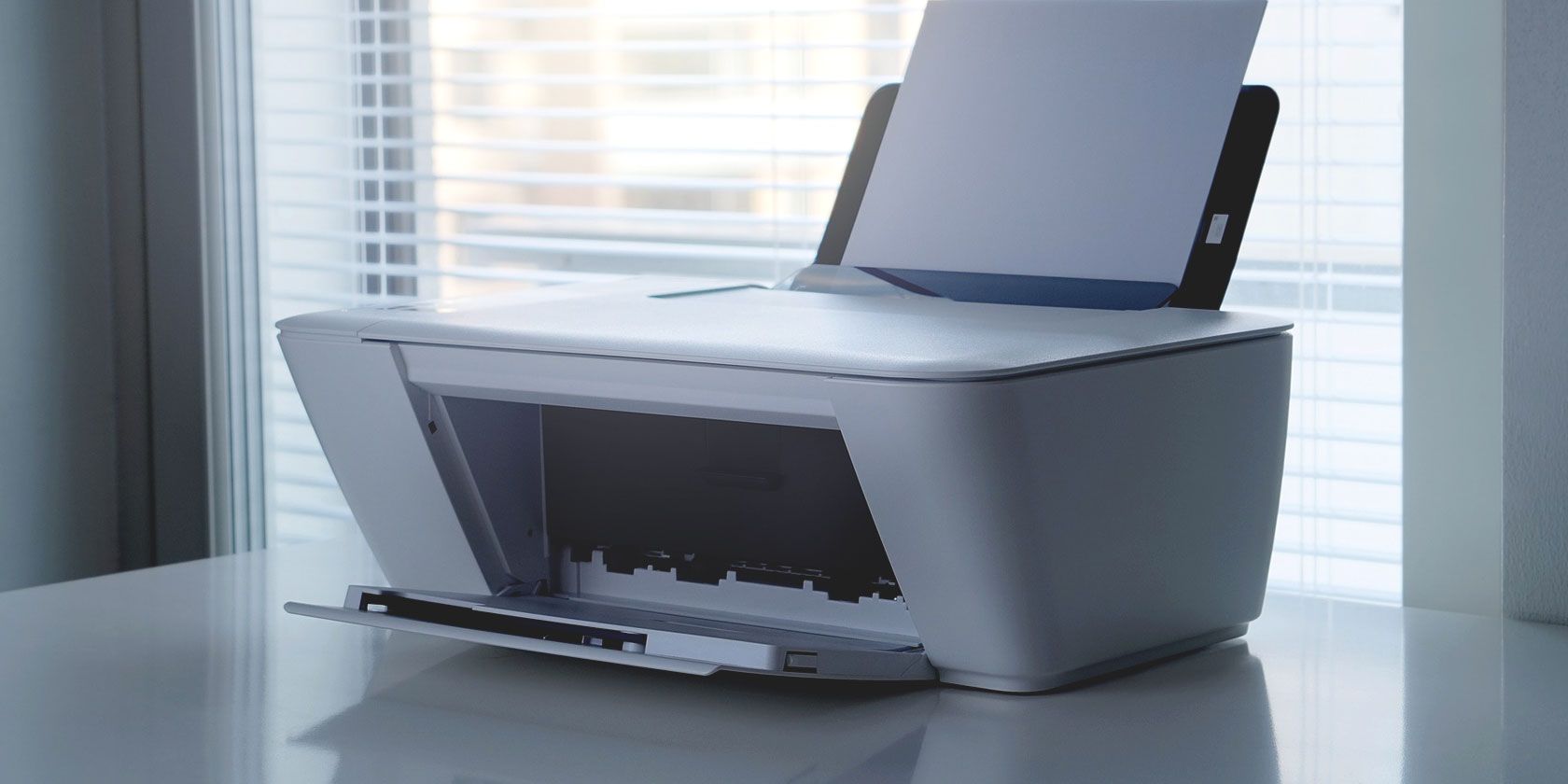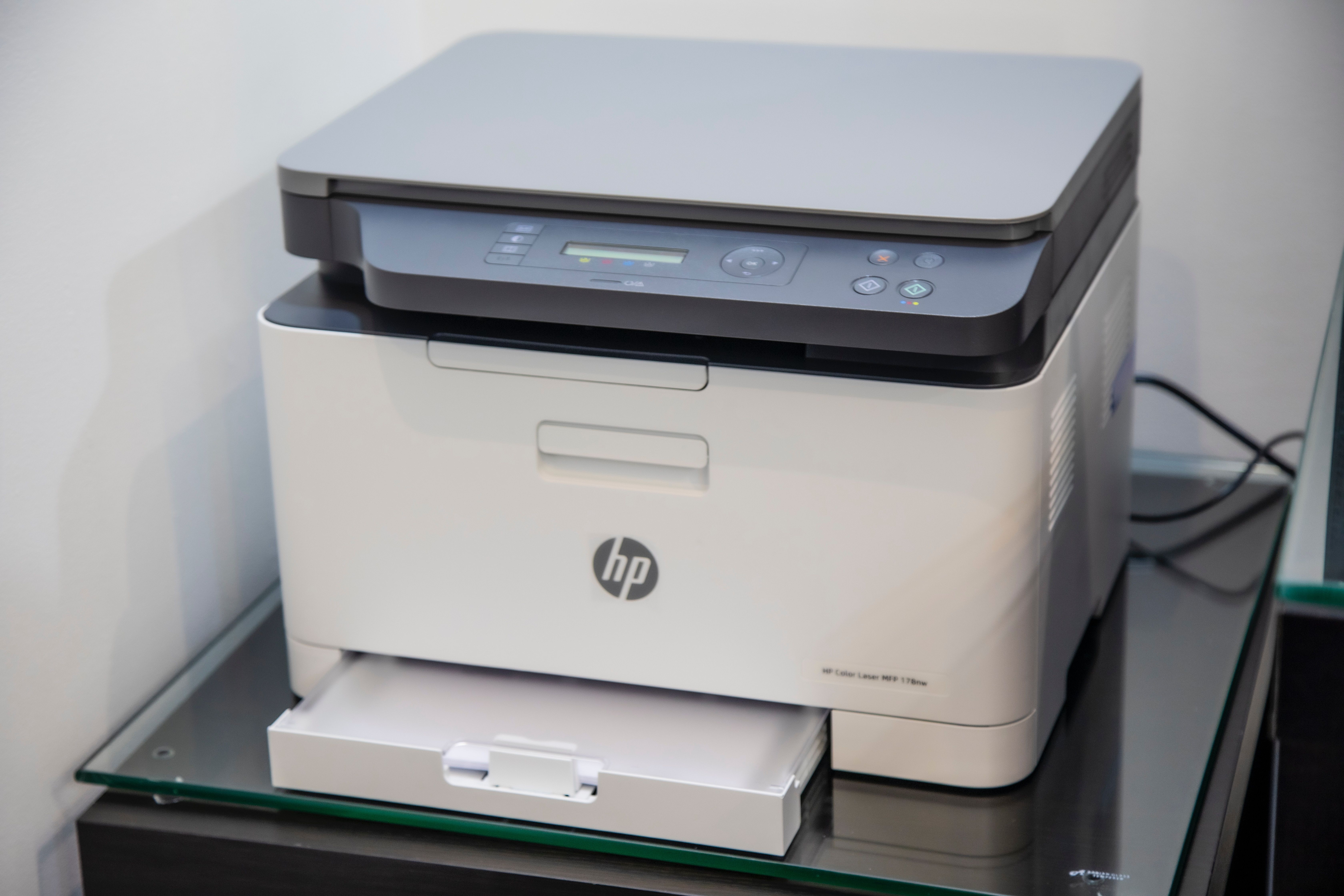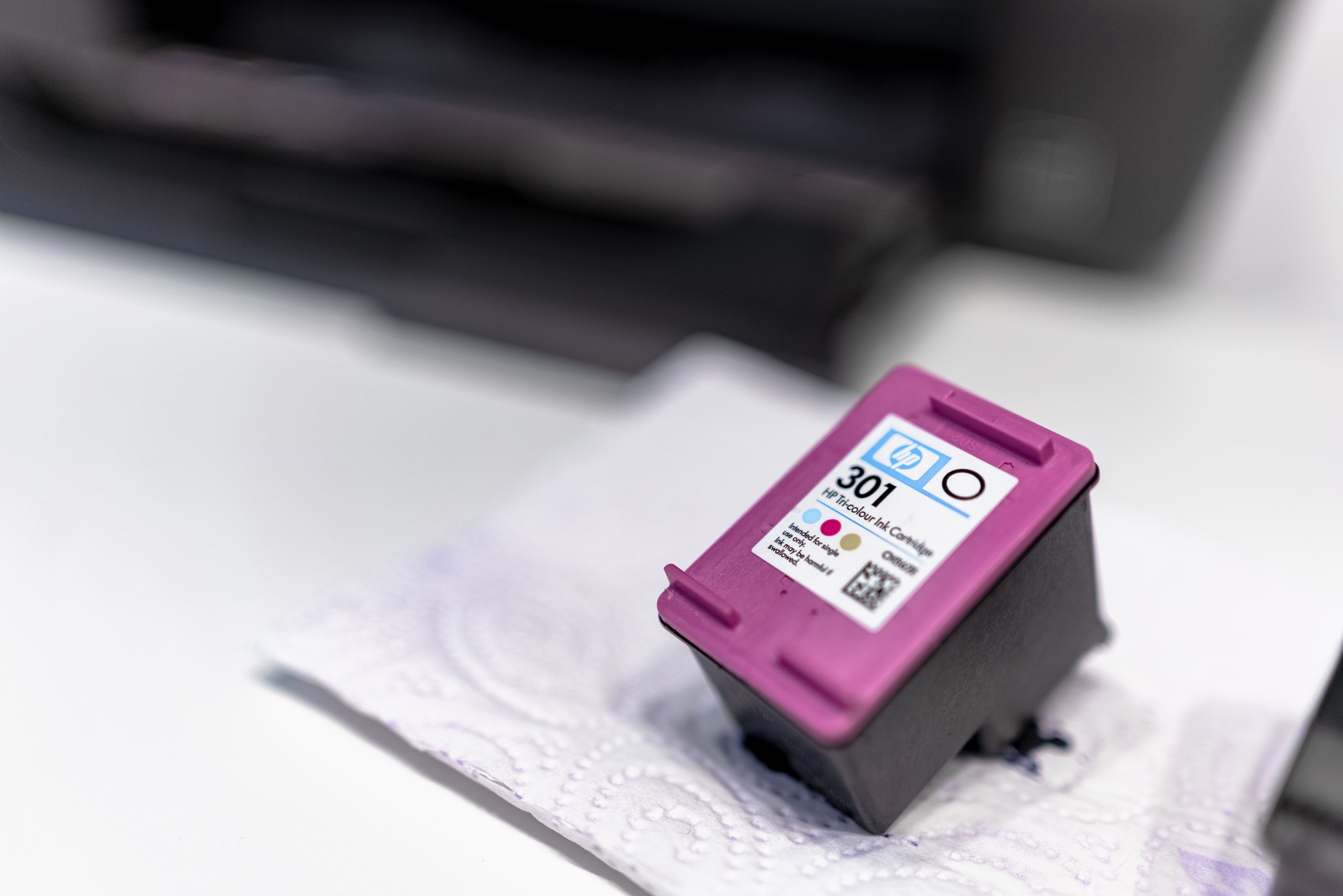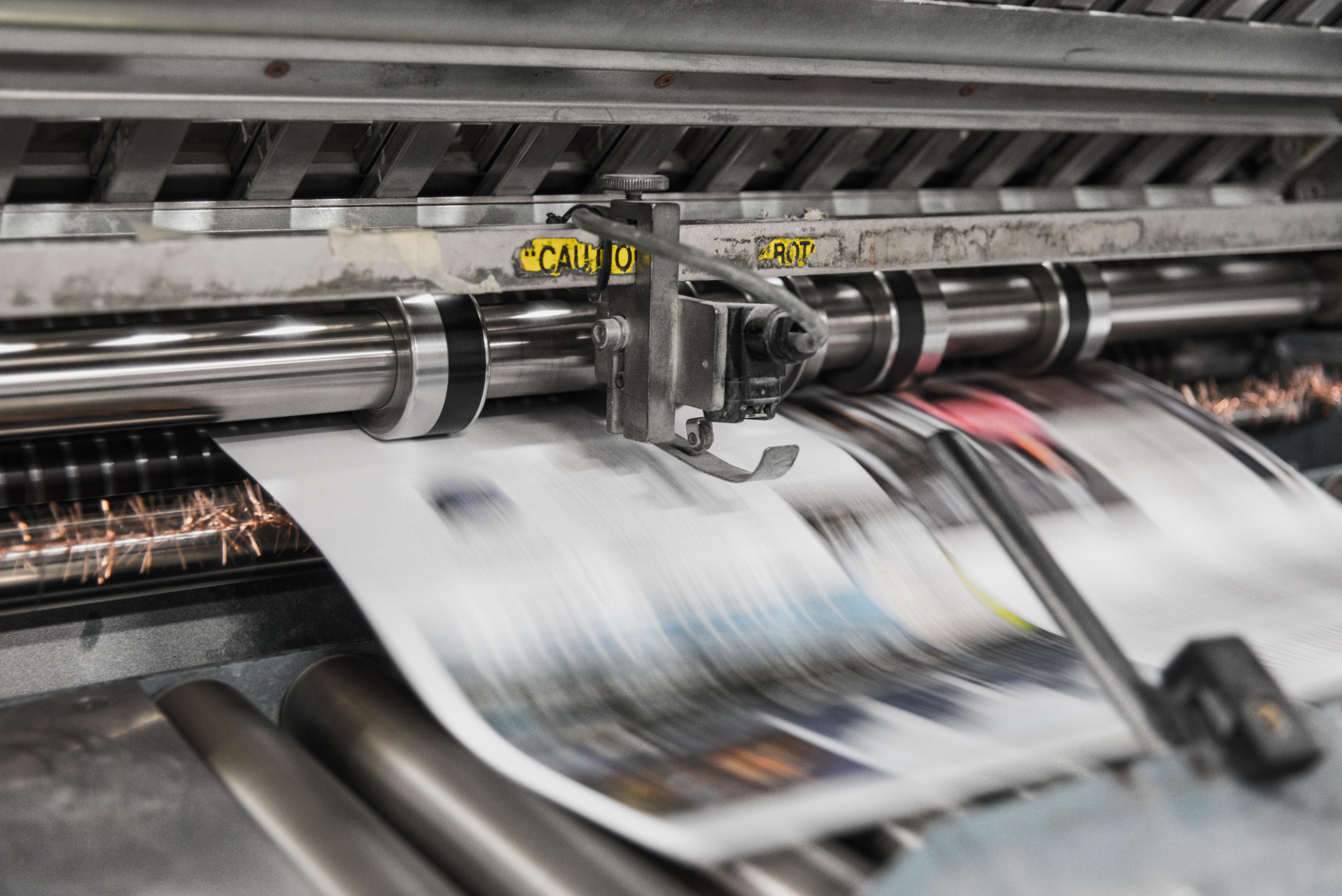Are you looking for a new printer? With so many different models out there, it's hard to know which printer is right for your needs.
To ensure you don't regret your purchase, consider these details before adding a product to your cart.
1. Printer Cost
The first and most obvious consideration is cost, which can vary based on the type of printer you choose.
Inkjet printers are a popular option for home and small business use due to their low upfront cost, but what makes them cheaper is also part of why they're not ideal for commercial printing needs: Ink cartridges need frequent replacement, which can increase running costs.
It's common for the cheapest inkjet printers to have some of the most expensive ink; it's how the manufacturers make their money. So, before you go to the nearest Best Buy, do some research online. Make sure the price of the replacement cartridges is in line with other models at a similar price point.
At the other end of the spectrum is laser printers, which use toner and can handle higher printing volumes. Laser printers tend to be more expensive upfront but are cost-effective for organizational publishing due to fewer cartridge replacements required over the printer's lifetime.
2. Printer Consumables: Ink, Toner, and Maintenance
When considering a printer purchase, it's essential to factor in the ongoing costs associated with ink or toner cartridges and the maintenance requirements. In addition, understanding the different consumable options available can help you make an informed decision.
For inkjet printers, the most common ink configurations are:
- Two-ink cartridges: a black cartridge and an all-in-one color cartridge
- Four-ink cartridges: a black cartridge and three separate cartridges for cyan, magenta, and yellow (the CMYK color model)
- Inkwells: large, refillable wells used in place of cartridges
Of the three, inkwells are comfortably the most economical in the long run. For example, the Epson Expression ET-3700 EcoTank can print 14,000 black pages or 11,200 color pages of a single refill. That's enough for two years of heavy usage.
It's also worth checking whether you can pick up third-party ink cartridges for your printer and refill them. Be aware that using unapproved ink cartridges might void your warranty.
For laser printers, the toner cartridge options include:
- OEM (Original Equipment Manufacturer) toner cartridges: Produced by the printer manufacturer, these cartridges ensure optimal compatibility and performance. Although more expensive, they offer the highest quality option.
- Compatible Toner Cartridges: Manufactured by third-party companies, these cartridges are designed to be compatible with specific printer models. They provide a more affordable alternative while maintaining good print quality. Choose a reputable brand for reliable performance.
Which configuration is right for you depends on how you plan to use your printer. If you print lots of text documents with few colors, a two-cartridge printer might suffice. People who need professional-grade color printouts should opt for a laser printer, and regular users can decide between CMYK and inkwell printers.
Don't forget to factor in ongoing maintenance. Printers have varying maintenance requirements, such as cleaning cycles, printhead cleaning, and other recurring tasks. Consult the printer's manual or specifications to understand the maintenance needs and ensure you can meet them effectively.
3. Print Quality
Print quality is affected by the design of the printhead, the printer's driver, and the quality of the ink. However, the printer's DPI (dots per inch) is the main spec to look out for. DPI refers to the number of dots or toner particles a printer can accurately place within a square inch of paper, indicating the level of detail and sharpness in the printed output.
Both inkjet and laser printers offer a range of DPI options. For inkjet printers, the DPI range typically spans from 600 x 600 DPI to 4,800 x 4,800 DPI or even higher. Higher DPI values generally result in crisper and more detailed printouts, especially for graphics, photos, or fine text. Similarly, laser printers also provide DPI options that determine the resolution of the printed documents. Laser printers usually offer resolutions such as 600 x 600 DPI, 1200 x 1200 DPI, or higher.
It's important to note that the highest DPI settings may not always be necessary for every user. If you primarily print text documents or simple graphics, a lower DPI range might still provide satisfactory results while potentially being more cost-effective. Consider your specific printing needs and evaluate the DPI range of available printers.
4. Print Speed
We've all sat impatiently while a printer creates a document at a snail's pace. It's frustrating.
Print speed is important when choosing a printer, especially if you frequently print documents with multiple pages. The specific PPM range and the impact of double-sided printing can vary between inkjet and laser printers.
Laser printers generally offer faster print speeds, with PPM ratings ranging from 20PPM to 50PPM or higher, depending on the model and specific requirements. Meanwhile, depending on the model, inkjet printer PPM ratings typically range from 5PPM to 25PPM or higher.
Double-sided printing, also known as duplex printing, can affect the overall print speed. Printing on both sides of the page requires additional mechanical processes, which may slightly slow the print speed compared to single-sided printing. The impact on speed can vary depending on the printer model and settings.
5. Paper Handling: Paper Sizes, Trays, and Capacity
Ensure that the printer supports the paper sizes you commonly use, whether standard paper, legal-sized paper, or unconventional sizes such as envelopes or photo paper. Additionally, evaluate the printer's paper capacity to determine if it can handle your expected volume of printing without frequent manual paper loading.
If you frequently work with legal-sized documents, verify that the printer can accommodate this paper size, as not all printers do. Some printers may have separate scanner feeding trays for scanning larger documents or scanning multiple papers into a single PDF file, which can be helpful for specific needs.
6. Printer Size: Compact, Portable, or Desktop
Printers come in many different shapes and sizes. If you're looking for a printer that fits in a small area, many compact versions are now available. Sure, you might have to sacrifice the scanner and copier functionality, but it's a good option for occasional users.
At the other end of the scale, some devices are significantly larger. They are normally aimed at the small office market and would be unnecessary in your home.
Remember, technology should look great; don't buy something that doesn't fit its environment.
7. Connectivity Options
Another major thing you should consider when buying a new printer is its connectivity. To establish which connections you need, ask yourself two questions:
- Where are you going to print from?
- Which devices are you going to print from?
All printers on the market offer wired connectivity. They can connect to your computer via a USB port.
However, some models also offer Wi-Fi connectivity and Bluetooth connectivity. You will also find machines that support Apple AirPrint. Bluetooth is great for printing from local mobile devices, while Wi-Fi and cloud support let you print documents remotely when you're away from home.
8. All-In-One Printer Features
Printers can do more than just print. The best all-in-one printers for homes and small offices can also copy, scan, and even send faxes.
You can expect to pay a bit more for all-in-one printers, but many people believe the extra capabilities are worth the additional expense. Also, keep an eye open for manufacturer-specific added features such as special photo printing modes and web apps.
Which Is the Best Printer for You?
Ultimately, the best printer depends on your budget, printing needs, and personal preference. Weigh the pros and cons of the models you're considering against the criteria we've discussed, and you're bound to make the right purchasing decision for your home or office.




